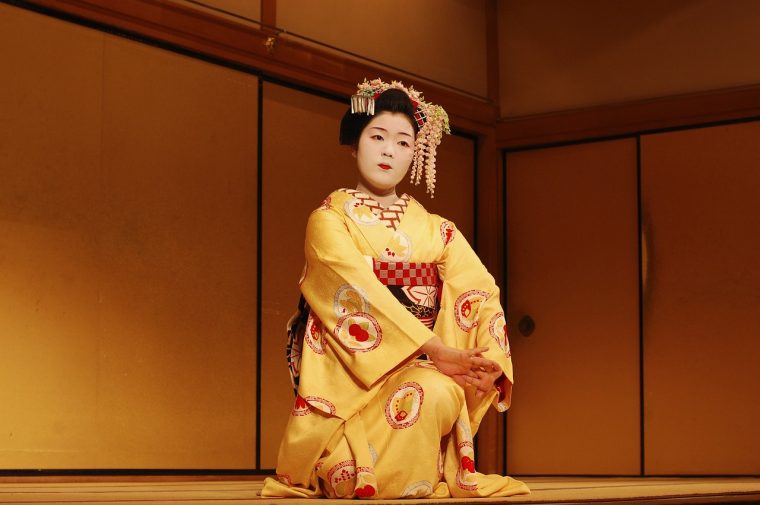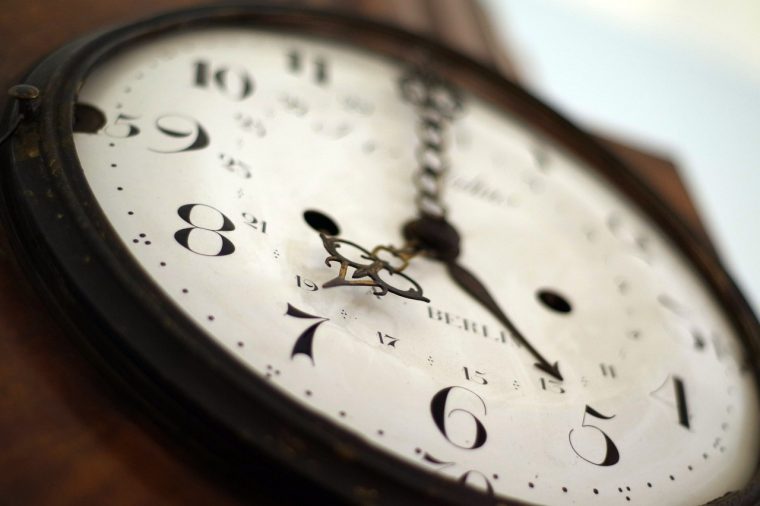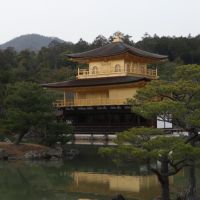The History of Maiko: 300 Years of Tradition and Evolution
S-fleage
S-fleage is a Kyoto-based company. We are proud to introduce the charms of Kyoto to the world. We hope this article will help you to experience Kyoto.
Latest posts by S-fleage (see all)
Japan, a land steeped in tradition and artistry, has captivated the world with its unique cultural heritage. One such captivating aspect is the world of Maiko, young women who serve as apprentices to Geisha, the accomplished female entertainers renowned for their grace, elegance, and artistic talents. This article delves into the fascinating history of Maiko, exploring their origins, evolution, daily life, and the profound impact they have on Japanese culture.
Contents
- Maiko: The Young Apprentices of Japanese Tradition
- The Birth and Evolution of Maiko: Guardians of Japanese Tradition
- A Day in the Life of a Maiko: A Journey of Dedication and Grace
- The Art of Transformation: The Enchanting Appearance of a Maiko
- Maiko and Japanese Culture: Guardians of Timeless Traditions
- The Timeless Allure of Maiko
Maiko: The Young Apprentices of Japanese Tradition

Maiko are typically young women between the ages of 15 and 20 who aspire to become Geisha, the esteemed entertainers of Japan. They undergo rigorous training to master various traditional arts, including Japanese dance, music, and the tea ceremony.
This intense preparation can take several years, as Maiko learns not only the arts but also the complex social skills and etiquette required to entertain guests at exclusive tea houses, known as “Ochaya”.
Their distinctive appearance, adorned with elaborate kimonos, intricate hairstyles, and delicate makeup, sets them apart and makes them a symbol of Japanese beauty and culture.
Maiko also carry a deep sense of history, with their customs and practices passed down through generations. As they progress in their training, Maiko gradually takes on more responsibilities and privileges, inching closer to the revered status of a full-fledged Geisha.
For many visitors to Japan, encountering a Maiko offers a rare glimpse into the living traditions of an ancient culture, where art, grace, and dedication converge in a timeless expression of elegance.
The Birth and Evolution of Maiko: Guardians of Japanese Tradition

From humble teahouses to the sophisticated world of Geisha, the journey of Maiko is a captivating tale of dedication and cultural preservation. These young apprentices embody the grace and elegance of Japan’s artistic heritage, carrying centuries-old traditions into the modern era.
Origins in Tea Houses
The story of Maiko, the iconic apprentice to Geisha, begins in the Edo period, roughly 300 years ago. Their roots can be traced to humble beginnings in Mizuchaya, or teahouses, located near shrines like Yasaka Shrine in Kyoto.
Initially, these establishments served tea and sweets to pilgrims, much like modern-day cafes. However, over time, the women working there began to entertain guests with songs and dances.
This subtle shift marked the birth of a tradition that would evolve into the sophisticated art forms associated with Geisha today. Ochaya, or teahouses, played a crucial role in shaping Maiko culture, becoming social hubs where wealthy merchants, samurai, and influential figures gathered to enjoy refined entertainment.
Maiko from the Edo Period to Modern Times
The role of the Maiko, an apprentice Geisha, became increasingly significant in Japanese society during the Edo period (1603-1868), especially in the traditional entertainment districts, or hanamachi, of Kyoto.
These young women, known for their grace and beauty, brought elegance and charm to teahouses and high-end restaurants, captivating guests with their presence. Dressed in vibrant furisode (long-sleeved kimono) and adorned with elaborate floral hairpins, maiko represented the epitome of refined beauty and cultural sophistication.
The training to become a Maiko was, and still is, extraordinarily rigorous. It involved mastering a wide range of traditional Japanese arts, including the shamisen (a three-stringed instrument), traditional dance, and the art of conversation.
In addition to these performance skills, Maiko also studied calligraphy, literature, and the tea ceremony, gaining deep cultural knowledge that enhanced their performances and interactions with guests. These performances often took place in prestigious venues, where the Maiko’s skills were highly valued and admired.
One of the most prestigious teahouses in Kyoto’s Gion district is Ichiriki Tei, an establishment with a history of nearly 300 years. Performing at Ichiriki Tei is a great honor for Maiko and Geisha. Guests who visit this renowned teahouse are said to forget the outside world, becoming captivated by the beauty and elegance within.
As a key part of the hanamachi, Ichiriki Tei arranges for Maiko and Geisha to entertain guests in a setting carefully designed to reflect the changing seasons, preserving the timeless atmosphere of Kyoto’s cultural heritage.
Maiko in the Modern Era
Today, Maiko continue to flourish within Kyoto’s five Hanamachi districts: Gion Kobu, Miyagawa-cho, Gion Higashi, Ponto-cho, and Kamishichiken.
The path to becoming a Maiko is still demanding, with young women typically joining an okiya (geisha house) after finishing junior high school. They undergo a training period called “shikomi,” which lasts six months to two years before they can debut as Maiko. Their daily routines are filled with rigorous practice and performances at various events, allowing them to hone their skills and artistry.
While the tradition of Maiko has endured for centuries, it faces the challenges of modernity. The number of Maiko has declined as fewer young women choose this demanding career path, yet efforts to preserve this cultural treasure are ongoing. Initiatives like Maiko schools and cultural events are being promoted to keep the tradition alive.
Moreover, as Maiko culture remains a vital part of Kyoto’s cultural heritage and a key attraction for tourists, local communities and authorities are working to protect Maiko from inappropriate behavior by visitors, ensuring that this living tradition can continue to enchant future generations.
A Day in the Life of a Maiko: A Journey of Dedication and Grace

A day in the life of a Maiko is a blend of disciplined training and graceful performance, all rooted in centuries-old tradition. Here is a glimpse into the demanding yet enchanting daily routine of these young cultural icons.
Morning Rituals
Maiko’s day typically begins between 8 and 10 AM. After a light breakfast, she heads straight to her training, which takes place at either the Nyokoba (training schools for female apprentices) or the Kaburenjō (dance practice halls).
These rigorous sessions, lasting from around 10 AM to 1 PM, focus on perfecting the various art forms essential to a Geisha’s craft—such as dance, music, and the art of refined etiquette. Each movement, gesture, and note are practiced repeatedly, ensuring that the Maiko’s performance is nothing short of flawless.
Let’s check out this video of a maiko undergoing her traditional training.
Ochaya (Tea House) Life
After a late lunch, the Maiko enjoys a brief respite—a couple of hours to herself—before the evening’s preparations begin.
As the sun sets, her transformation into a symbol of Japanese elegance takes place. Around 6 PM, she begins her engagements at the Ochaya, or teahouses, where she will entertain guests at exclusive gatherings known as Ozashiki.
These engagements are the highlight of a Maiko’s day, where she performs traditional dances accompanied by musical instruments like the shamisen and engages in graceful conversation.
Every interaction is designed to make her guests feel welcomed, valued, and transported into a world of refined beauty.
Behind the Scenes
The Ozashiki often continue late into the night, with Maiko attending to her guests until midnight. After the last guest departs, the Maiko returns to her okiya (geisha house), where she is assisted in removing her elaborate kimono and makeup.
By the time she finally retires to bed, it is often well after 1 AM. This demanding schedule, repeated day after day, highlights the intense dedication, discipline, and passion required to maintain the Maiko tradition.
Despite the challenges, the life of a Maiko is one of profound beauty, as she carries forward the timeless traditions of Japanese culture with grace and elegance.
The Art of Transformation: The Enchanting Appearance of a Maiko

From her intricate kimono to her delicate makeup, a Maiko’s appearance is a detailed expression of Japanese tradition. This transformation is a living work of art, representing centuries of cultural heritage, and captivates all who see it.
Kimono: A Walking Masterpiece
The graceful allure of a Maiko, draped in a vibrant kimono, captivates all who see her. Her kimono is a work of art, distinguished by a long, trailing hem called a “susohiki.” When she walks outdoors, Maiko delicately lifts part of this hem with her left hand, adding a touch of elegance to her already glamorous appearance.
The kimono’s design also includes specific adjustments, such as the “shoulder-age” and “sleeve-age,” which emphasize her youth and status as an apprentice.
The long, heavy obi she wears, known as the “darari no obi,” is another striking feature. This wide, trailing sash requires assistance to tie, reflecting Maiko’s deep commitment to her craft and the traditional arts.
Hair and Makeup: The Essence of Maiko Beauty
Maiko’s beauty goes beyond her stunning kimono; her distinctive makeup and evolving hairstyles are equally important.
Her face, made luminous with a special camellia oil called “bintsuke abura” and covered in a thick layer of white powder, creates a soft, porcelain-like complexion that accentuates her features, particularly her expressive eyes. Delicate red accents are added to her eyes and lips, their placement varying by her stage in training and the season, enhancing her youthful charm.
As Maiko matures, her hairstyle also evolves. She begins with the “ware-shinobu,” a simple style featuring a double loop at the back and progresses to the more intricate “ofuku” style. This later style involves elaborate braiding and additional volume, symbolizing her growth and experience. Each hairstyle is a testament to her dedication and the artistry required to maintain it, often with the help of a skilled hairdresser.
Accessories and Ornaments: The Final Touches of Elegance
Maiko’s appearance is further enhanced by the exquisite accessories she wears. The “pochiri,” a large obi clasp made from precious materials like ivory, coral, or jade, serves as a symbol of her status and adds a subtle touch of elegance to her ensemble.
Her hair is adorned with seasonal floral hairpins, known as “hana-kanzashi,” which reflect the time of year. These delicate ornaments, inspired by flowers such as cherry blossoms and irises, enhance her natural grace and beauty.
Her footwear, known as “okobo,” are tall wooden sandals that make a distinctive clacking sound as she walks, signaling her presence with each step. For younger Maiko, these shoes often contain small bells that jingle softly, adding a playful yet refined element to her walk.
Together, these accessories complete the Maiko’s enchanting appearance, transforming her into a living embodiment of Japanese tradition and elegance.
Maiko and Japanese Culture: Guardians of Timeless Traditions

The Maiko, with their grace and dedication, serve as living symbols of Japan’s rich cultural heritage. Through their rigorous training in traditional arts and their role as apprentices to Geisha, they help preserve and pass down the essence of Japanese culture.
Their influence extends beyond Japan’s borders, capturing the imagination of people worldwide and ensuring that these ancient traditions remain vibrant and appreciated in the modern age.
Preserving Traditions
Maiko play a crucial role in safeguarding Japan’s cultural legacy. Their training is a comprehensive journey through traditional Japanese arts, including dance, music, and the tea ceremony.
By mastering and performing these arts, Maiko not only keeps these practices alive but also makes them accessible and relevant to future generations. Each performance is a living testament to the beauty and depth of Japan’s cultural traditions, ensuring that they continue to thrive in an ever-changing world.
Maiko and Geisha
As apprentices to Geisha, Maiko are on a path of artistic and personal development. Geisha, revered for their exceptional skills in the traditional arts and their refined social graces, serve as both mentors and role models. They are masters of their craft, capable of engaging in witty conversation and providing intellectual stimulation to their guests.
For a Maiko, the journey to becoming a Geisha is both challenging and inspiring, as they aspire to embody the same level of artistry and sophistication that defines their mentors.
Maiko in Modern Media
The allure of Maiko extends far beyond the tea houses of Kyoto, capturing the global imagination through modern media. Their beauty, grace, and mysterious charm have been featured in numerous films, television shows, and books, allowing audiences worldwide to glimpse the elegance of Japanese culture.
This presence in popular culture not only amplifies the mystique of Maiko but also helps to raise awareness and appreciation for Japan’s rich cultural heritage, ensuring that these ancient traditions continue to resonate with new generations.
Related Article: https://time.com/6246425/the-makanai-cooking-for-the-maiko-house-netflix/
The Timeless Allure of Maiko

The world of Maiko is a mesmerizing blend of tradition, artistry, and cultural heritage. These young women are more than just symbols of beauty; they are the living embodiment of Japan’s rich history, preserving and celebrating its timeless traditions.
As Maiko gracefully navigates the demands of the modern world, their enduring appeal serves as a powerful reminder of the strength and beauty of Japanese culture. Their continued presence not only enchants but also inspires, proving that true elegance and tradition can transcend time.




